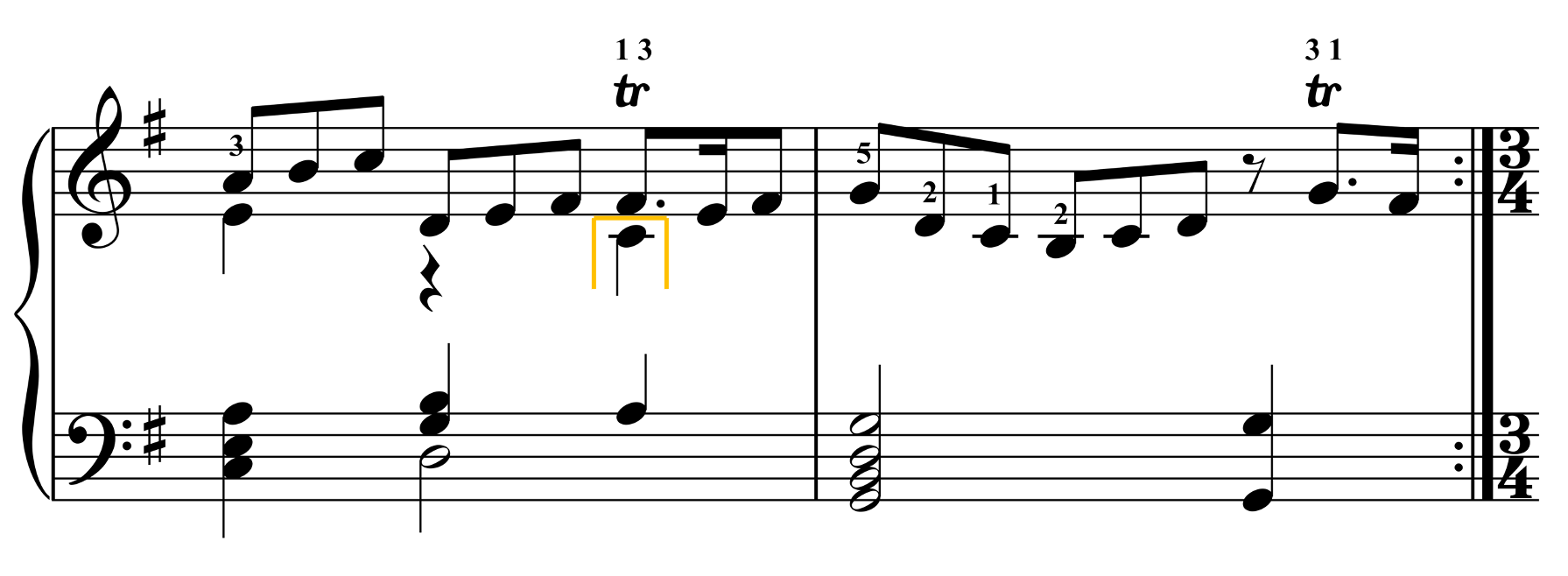“Though no hand configuration makes this passage easy, I find it easier to take the bottom voice of the top staff in the left hand to facilitate the incredibly fast right-hand sixteenth notes.”
Submitted by Michael Clark
Published on 1/1/2020


“Though no hand configuration makes this passage easy, I find it easier to take the bottom voice of the top staff in the left hand to facilitate the incredibly fast right-hand sixteenth notes.”
Submitted by Michael Clark
Published on 1/1/2020

“Taking the bottom octave in the left hand makes it possible to trill with stronger fingers.”
Submitted by Michael Clark
Published on 1/1/2020

“Changing the pedal with the melodic line allows the left hand to sneak up to take the E-flat from the alto line, freeing the right hand for a more relaxed trill.”
Submitted by Michael Clark
Published on 1/1/2020

“Taking the bottom octave in the left hand makes it possible to trill with stronger fingers.”
Submitted by Michael Clark
Published on 1/1/2020

“This fingering allows the trill to played with strong fingers. Taking the first of the fortissimo chords with the left hand more evenly distributes the chords rhythmically and avoids an unnecessary leap.”
Submitted by Michael Clark
Published on 1/1/2020

“Taking the grace notes in the left hand facilitates a smooth transition between registers.”
Submitted by Michael Clark with thanks to Robert Roux
Published on 1/1/2020

“Take these two note notes with left hand is a secure way to end the trill and make the leap.”
Submitted by Michael Clark
Published on 1/1/2020
Original:

Suggested performance:

“Starting the trills with the left-hand thumb gives brilliance.”
Submitted by Michael Clark with thanks to Nancy Weems
Published on 1/1/2020

“I choose to play this trill with the right hand. The left then takes over for the chords, freeing the top voice for additional ornamentation.”
Submitted by Michael Clark
Published on 1/1/2020

“Taking the C in the left hand frees the right hand to use a more brilliant fingering (1 on G and 3 on F-sharp) for the trill.”
Submitted by Michael Clark
Published on 1/1/2020

Submitted by Josh Condon
Published on 6/7/2020

SPECIAL COLLECTION | Dorothy Brandwein’s Ravel Fingerings
Published on 5/5/2022 with the author’s permission
First appeared in Dorothy Woster Brandwein, "Divisi Fingering in Selected Passages from Ravel's Solo Piano Works" (DMA diss., University of Missouri–Kansas City, 1981), 51, 121.
50: “Ravel experimented with the effect which is produced when two harmonies are repeated in rapid succession at the softest dynamic level possible. Divisi fingering allows the pianist to easily coordinate the rapid alternation of the two sonorities…”
51: “The same technique may be used for the double-note trill at the end of the ‘Menuet,’ in order to preserve the sounding intervals of a third. If the right hand depresses the final notes of the trill, as marked, the left hand is free to depress silently the bass notes as the pedal clears all vibrations extraneous to the tonic harmony.”

“The left hand can assist in a secure ending to the trill.”
Submitted by Michael Clark
Published on 1/1/2020